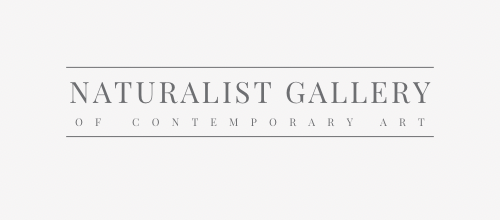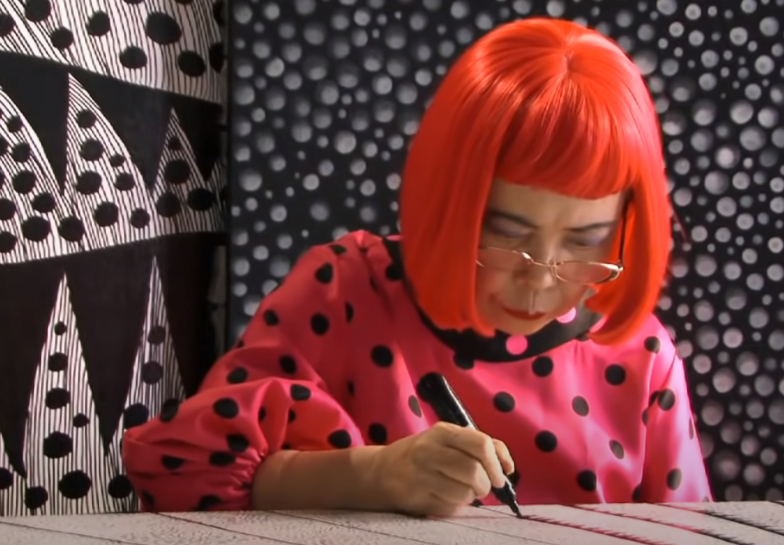“Form itself, even if completely abstract ... has its own inner sound.”
―
Abstract art has undergone a remarkable evolution since its inception in the late 19th century. Today, it encompasses various genres, including Abstract Expressionism, Lyrical Abstraction, Color Field, Post-painterly Abstraction, and Minimalism. From the early pioneers to contemporary artists, abstraction continues to captivate audiences and hold a prominent place in the art world. In this article, we will delve into the world of abstract art, showcasing renowned artworks that have made lasting impacts on the genre.
-
Kazimir Malevich, Black Square, 1915:

Kazimir Malevich's "Black Square" is an iconic work that represents the pinnacle of his Suprematist movement. This groundbreaking piece, consisting of a black square on a white background, challenged traditional notions of representation and embraced pure abstraction.
-
Frantisek Kupka, The Yellow Scale, 1907-1908:

"The Yellow Scale" by Frantisek Kupka exemplifies his exploration of color and form. This vibrant and dynamic painting showcases his interest in spiritual and abstract themes. -
Hilma af Klint, The Ten Largest, No. 7, Adulthood, Group IV, 1907:

Hilma af Klint's "The Ten Largest" series is a groundbreaking collection of abstract paintings created before the emergence of abstract art movements. "Adulthood" is a mesmerizing composition that showcases af Klint's spiritual and symbolic approach to abstraction. -
Kasimir Malevich, White on White, 1918:

"White on White" by Kasimir Malevich is another seminal work of Suprematism. This monochromatic composition, featuring a white square on a white background, explores the purity of form and the spiritual essence of abstraction. -
Piet Mondrian, Composition with Red, Blue, and Yellow, 1930:

Piet Mondrian's "Composition with Red, Blue, and Yellow" is a prime example of his iconic style known as Neo-Plasticism. The painting's grid-like structure and primary colors express Mondrian's quest for universal harmony and balance. -
Mark Rothko, No. 14, 1960:

Mark Rothko's abstract paintings, characterized by large blocks of color, evoke emotional and spiritual responses. "No. 14" showcases Rothko's signature style of stacked rectangular forms, inviting viewers to contemplate the depth and intensity of color. -
Yayoi Kusama, Infinity Nets, 1959:

Yayoi Kusama's "Infinity Nets" series consists of repetitive patterns of interlocking loops, creating mesmerizing visual effects. Kusama's obsessive repetition of forms reflects her lifelong exploration of infinity and the subconscious. -
Robert Motherwell, Elegy to the Spanish Republic, 1948-1953:

Robert Motherwell's "Elegy to the Spanish Republic" series is a poignant response to the Spanish Civil War. These large-scale abstract paintings combine bold black forms and expressive brushwork, embodying themes of tragedy, loss, and remembrance. -
Ellsworth Kelly, Red Blue Green, 1963:

"Red Blue Green" by Ellsworth Kelly exemplifies his minimalist approach to abstraction. The painting features three monochromatic panels that explore the relationship between color, shape, and the surrounding space. -
Agnes Martin, The Islands, 1979:

Agnes Martin's serene and meditative abstract paintings, such as "The Islands," evoke a sense of tranquility and harmony. Composed of delicate horizontal lines and subtle variations in color, Martin's works invite contemplation and introspection. -
Anish Kapoor, Cloud Gate, 2004:

Anish Kapoor's monumental sculpture "Cloud Gate," also known as "The Bean," is a captivating example of abstract art in the public realm. Its mirrored surface reflects and distorts the surrounding environment, inviting viewers to engage with their own reflections. -
Bridget Riley, Movement in Squares, 1961:

Bridget Riley is known for her Op art paintings that create optical illusions and visual movement. "Movement in Squares" features a grid of black and white squares that generate a sense of pulsation and rhythm. -
Cy Twombly, Untitled (Bolsena), 1969:

Cy Twombly's expressive and gestural style is exemplified in "Untitled (Bolsena)." This large-scale painting combines calligraphic marks, scribbles, and drips, capturing the artist's spontaneous and lyrical approach to abstraction. -
Frank Stella, Jasper's Dilemma, 1962:

Frank Stella's "Jasper's Dilemma" represents his early explorations into Minimalism. The painting features repeating concentric squares in vibrant colors, emphasizing the flatness of the canvas and the relationship between shape and color. -
Gerhard Richter, Abstract Painting, 1986:

Gerhard Richter's abstract paintings, characterized by blurred and scraped surfaces, challenge traditional notions of representation. "Abstract Painting" exemplifies Richter's exploration of the boundaries between abstraction and representation, creating an enigmatic and visually compelling work. -
Joan Mitchell, Sunflower, 1969:

Joan Mitchell's "Sunflower" is a vibrant abstract composition that showcases her gestural brushwork and emotional intensity. The painting's dynamic energy and bold use of color evoke a sense of vitality and movement. -
Willem de Kooning, Excavation, 1950:

"Excavation" by Willem de Kooning is an abstract expressionist masterpiece characterized by dynamic brushwork and layers of overlapping forms. The painting exudes a sense of chaos and energy, reflecting the artist's raw and visceral approach. -
Lee Krasner, Celebration, 1960:

Lee Krasner's "Celebration" is an exuberant and vibrant abstract painting that showcases her mastery of color and composition. The work embodies Krasner's bold and expressive style, reflecting her pioneering role as an abstract expressionist artist. -
Helen Frankenthaler, Mountains and Sea, 1952:

Helen Frankenthaler's "Mountains and Sea" is a seminal work of color-field painting. The painting's translucent washes of color create a sense of depth and atmosphere, capturing the artist's exploration of the relationship between color and emotion. -
Josef Albers, Homage to the Square: Ascending, 1953:

Josef Albers' "Homage to the Square: Ascending" is part of his iconic series that explores the interaction of colors within geometric forms. The painting's carefully arranged squares and their optical effects demonstrate Albers' fascination with color perception. -
Louise Bourgeois - Spider, 1997:

"Spider" is a monumental sculpture by Louise Bourgeois. This abstract artwork features long, spindly legs and a bulbous body, evoking themes of maternal protection, vulnerability, and strength. -
Julie Mehretu - Stadia II, 2004:

"Stadia II" is a large-scale abstract painting by Julie Mehretu. The artwork incorporates intricate architectural and urban imagery, layered with dynamic marks and lines, creating a sense of movement and complexity. -
Shirazeh Houshiary - Breath, 2003:

"Breath" is an ethereal installation by Shirazeh Houshiary. The artwork consists of delicate strands of thread suspended from the ceiling, forming a translucent and immersive environment that explores themes of spirituality and transcendence. -
Carmen Herrera - Blanco y Verde, 1959:

"Blanco y Verde" is a minimalist painting by Carmen Herrera. The artwork features geometric forms and contrasting colors, demonstrating Herrera's mastery of composition and balance. -
Kazuo Shiraga - Challenging Mud, 1955:

"Challenging Mud" is a powerful and expressive artwork by Kazuo Shiraga. The painting was created through the artist's unconventional method of using his feet to apply paint to the canvas, resulting in dynamic and visceral compositions. -
Lygia Clark - Bichos (Creatures), 1960:

"Bichos" (Creatures) is a series of interactive sculptures by Lygia Clark. These abstract artworks consist of hinged metal plates that can be manipulated by the viewer, inviting them to engage and participate in the creation of form. -
Alberto Burri - Combustione Legno, 1955:

"Combustione Legno" (Wood Combustion) is a mixed-media artwork by Alberto Burri. The piece incorporates burnt and treated wood, showcasing Burri's innovative use of materials and his exploration of texture and surface.

Blackboard, Cy Twombly, 1968
Explore our curated selection of contemporary artists from around the globe.
Naturalist Gallery offers artist representation internationally. Apply your art.
The world of abstract art is rich and diverse, encompassing a wide range of styles and approaches. These notable artworks, created by visionary artists over the past century, have made significant contributions to the genre. From the pioneers of abstract art to contemporary masters, their works continue to inspire and captivate audiences, pushing the boundaries of artistic expression.

At the bright open Gaeta house - photo Bruce Weber for Vogue
You may also find the following articles helpful:


